 |
||||||||||||||
|
With its team efforts by the L.A.S.T. Factory's Lindsay cables; Mark Hampton's Z-Cables and Z-Sleeves; and two of Chris Hoff's BPT BP-3.5 Signature balanced power isolators; the AUDIOPAX room at CES 2004 also collaborated with Kazutoshi Yamada of Japanese Zanden Audio fame by using his SOTA digital front end duo: The brand-new Model 2000 RedBook transport and his well-known valve-powered Model 5000 MkIV DAC. My recently published show report singled out this room as personal "Favorite of Show". As fortunes would have it, I was gifted with the world's first review opportunity for Yamada-San's new transport and offered to take the actual show sample home to test it with my own Zanden DAC. |
||||||||||||||
 |
||||||||||||||
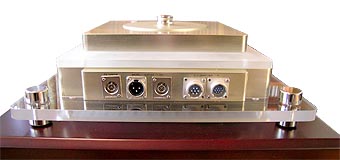 |
Though it seems hard to believe when considering the enthusiastic acclaim which his Model 5000 MkIV DAC has already garnered around the globe, Yamada-San is even more excited about the accompanying transport - and not just because it is his newest invention. As I learned over dinner in Las Vegas, Yamada has already applied for a patent on his proprietary reclocker which does not use Rubidium as championed by Esoteric's state-of-the-art digital architecture. According to Zanden's designer, "Rubidium is bad for the sound". He claims to have the numbers to prove it - jitter performance superior by a factor of 100 to the very best currently extant. Understandably reluctant to volunteer too many details until the patent process has run its course, Yamada-San assured me that his discovery has implications as well for DVD-A and SACD. According to this Japanese engineer, the latter suffers "very significant" high-frequency phase shift problems intrinsic to the format per se. The Model 2000 transport as shown at CES already sported the I-squared-S BNC output which will provide an external clock to the updated Model 5000-S once the latter is outfitted with this additional input socket (the DAC at the show did not yet have this feature). Yamada-San was also still working on his custom remote which will replace the current plastic unit provided for the Las Vegas debut. I understand that in its final iteration, the Model 2000 will be available in two different versions distinguished by their respective jitter performance, the premium one sporting the external I²S clock link [left]. Why is Yamada-San so excited about this transport? Because to his mind and ears, its impact on RedBook performance is even more fundamental and significant than his DAC. He is fully convinced that his new transport invention will -- or at least should -- become the new de-facto standard for CD playback. He bases this conviction on intimate familiarity and comparisons with Esoteric's top-line Japanese offerings which represent a veritable tour-de-force of engineering excellence. Regardless, he feels his proprietary digital clock technology goes beyond even that and has taken pains to isolate the massively overbuilt power supply by going offboard and using two Zanden screw-lock umbilicals (one 7-pin, one 10-pin) to connect it to the transport section proper [left]. Come late April when I'm planning to have this review finalized, I should possess all the hard data and specs that Yamada-San is prepared to share with us at the time. For now, let's indulge in some window shopping. When asked how this tiny speciality firm manages its preposterously high standards of industrial design and execution, Zanden's president explained that his company's base in the city of Osaka is home to manufacturing capabilities completely self-sufficient to produce state-of-the-art aerospace satellites without any outsourcing beyond city limits. As long as he can conceive and blueprint it, his sources and vendors can build the required chassis parts to the most impeccable of standards and from whatever materials he specifies - which in the Model 2000 involves not just metal work but also extensive sandblasted acrylic. Asked about final pricing, Yamada-San smiled one of those enigmatic Asian smiles and quipped "I'm engineer. I always forget about economics." This by way of indicating that he didn't approach this project with a price point in mind but doggedly set out to create the most uncompromised RedBook disc spinner known to man. By the time my finalized review goes to print and pixel, I should have final US pricing for you. However, I can already tell you that it will definitely come in above the $10,000 the matching DAC sells for. Does the world need another very expensive transport limited exclusively to the 16-bit/44.1kHz standard? I can think of two answers to that. First, the Model 2000 is an uncompromised first-of-its-kind technology demonstrator clad in audio jewelry aesthetics. As time goes by and the patent is granted, we should see more cost-effective implementations. Why blame an inventor for deliberately setting out to move the fence posts and then refusing to compromise with inferior build quality and cosmetics? Secondly, let's reflect on the premature wholesale ditching of vinyl in favor of 16-bit/44.1kHz. CD required 20-plus years of maturation to achieve its current level of acknowledged excellence which, in best-case scenarios, finally competes with vinyl on equal footing. But witness the rise of contemporary turntable designs that occurred in parallel to vinyl's presumed demise. In 2004, the colossal variety and diverse technical implementations of turntables far eclipse what was available during vinyl's so-called rule and heyday. That includes today's laser turntable. The king is dead, long live the new king. Facts force us to differ, don't they? Those unfortunate early adopters who chucked their treasured record collections to embrace perfect sound forever in many cases now regret that hasty gesture most profoundly. Those who enjoy vinyl celebrate the ongoing availability of used records at bargain basement pricing. Doesn't today's corporate push to embrace the so-called super-resolution formats signify similarly premature folly? RedBook clearly remains the dominant and most extensive musical software carrier extant. And as Bel Canto Design's fabulous universal PLayer and Zanden's own 2000/5000 combo prove beyond a doubt, 16/44 offers performance entirely commensurate with and perhaps different but every bit as enjoyable as SACD and DVD-A - as long as CD's pressing and mastering qualities aren't compromised and the playback devices are up to the task. As a popular saw has it, "there's a lot more in them thar CD pits than assumed or previously acknowledged". Or as 47Lab's maestro would put it to explain the raison d'être for his groundbreaking PiTracer transport: "Let's not abandon the CD format when we clearly haven't learned yet to properly extract all the information that's actually on those discs." If you own substantial RedBook collections and continue to purchase music that's of insufficiently broad appeal to make it onto SACD or DVD-A anytime soon, you'd want the most optimized RedBook playback facilities available. That is the listener to whom the Zanden Audio Model 2000 is dedicated. Needless to add, initial expense will limit ownership to those with the requisite premium budgets. But if Yamada-San is correct in his assessment -- about how significant a contributor his invention is to the fully exploded enjoyment of standard CDs -- we must really view his offering has a harbinger of things to come: A technology demonstrator bound to become more widespread and affordable as time goes by. |
|||||||||||||
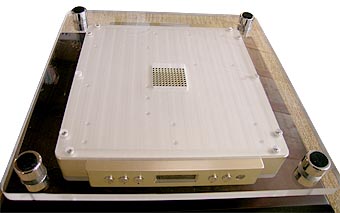 |
||||||||||||||
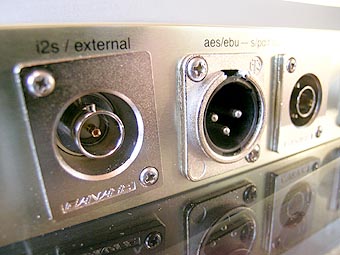 |
||||||||||||||
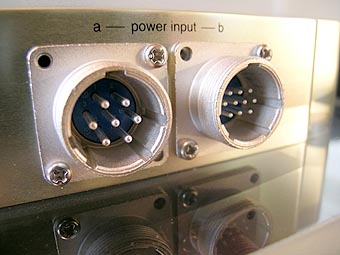 |
||||||||||||||
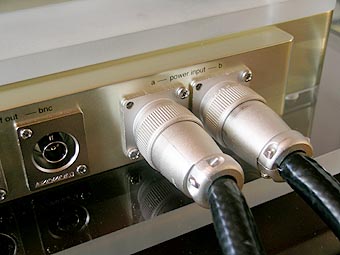 |
||||||||||||||
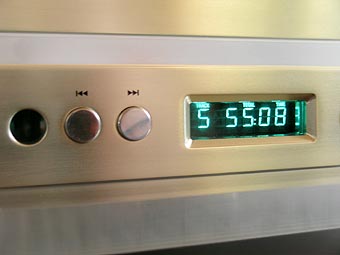 |
||||||||||||||
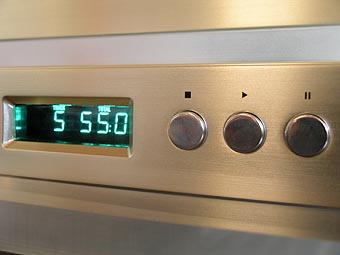 |
||||||||||||||
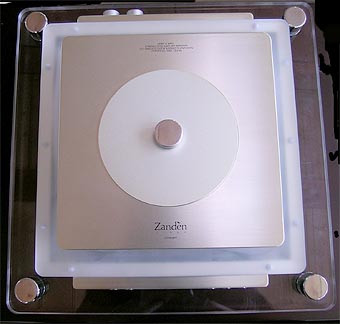 |
||||||||||||||
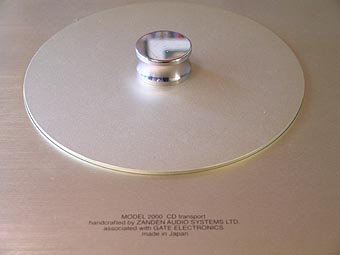 |
||||||||||||||
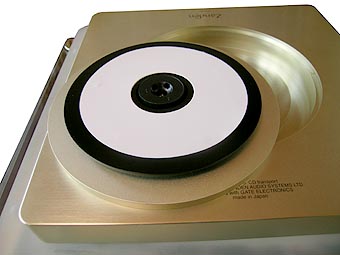 |
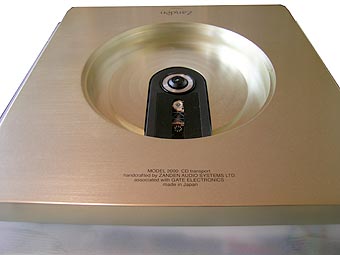 |
|||||||||||||
 |
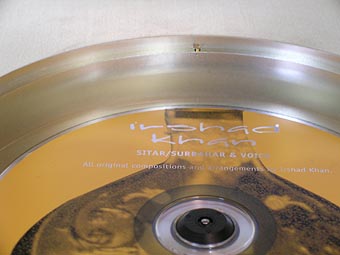 |
|||||||||||||
The Model 2000 hard-mounts a Zanden-modified Philips PRO transport into the precision-machined CD bay, with the tiny nipple inside the rim [above right] triggered by the inserted massive lid to quickly commence with the TOC protocol. The underside of the lid sports a special Japanese "paper" whose RFI/EMI shielding properties are said to equate 3-centimer thick aluminum. |
||||||||||||||
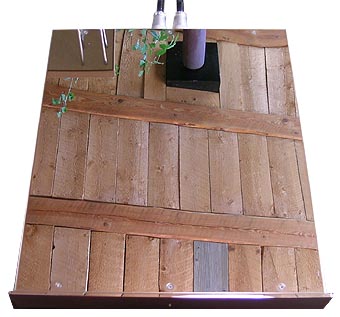 |
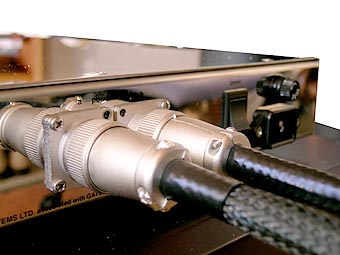 |
|||||||||||||
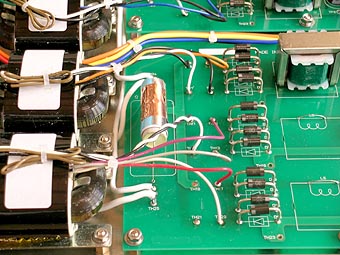 |
||||||||||||||
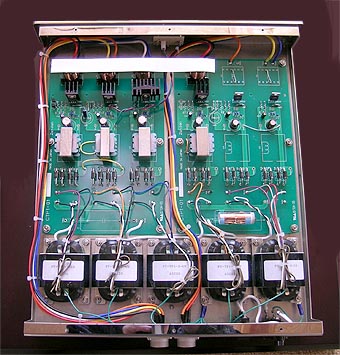 |
||||||||||||||
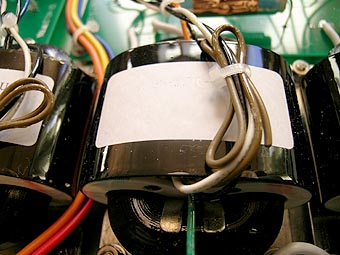 |
||||||||||||||
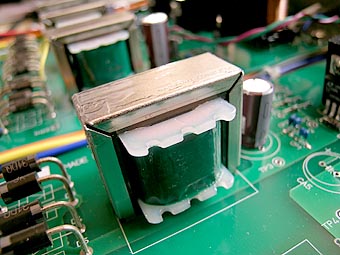 |
||||||||||||||
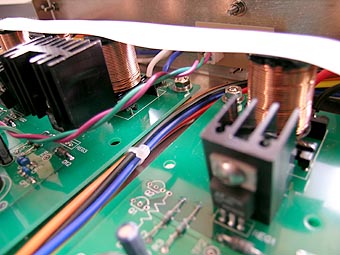 |
||||||||||||||
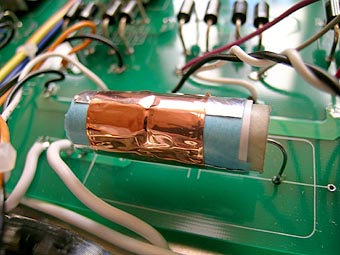 |
||||||||||||||
The power supply's mirror-polished stainless casing had me appreciate the requisite skills of professional photographers - I only include my ceiling reflection photo to give you an idea as to the unit's dimensions. 5 transformers and 8 chokes indicate most serious filtering, and choice details like the hand-wrapped copper foil around a critical capacitor, and more applications of the mystery paper across the four smaller chokes, all show extreme attention to noise reduction. |
||||||||||||||
Out of respect for Yamada-San's patent process, I didn't dare open the actual transport section and also digitally removed certain markings in the power supply images. Dimensions for the transport are 15.7" x 15.7" for the footprint of the half-inch thick acrylic platform; and 4" of total height excluding the lid handle. The power supply measures just shy of 14" across, 15 inches deep and 2.4 inches high. |
||||||||||||||
| So much now for window-shopping or tire kicking as the less patient of retailers might denounce our collective need to visually inspect objects of potential purchase. I can just imagine one of them grumbling exasperatedly to himself: "You've inspected every bloody inch of this thing twice over - are you ready to buy or not?" Actually, with an object d'art of the Model 2000's caliber, I suspect that a savvy retailer would assign pride of place to it, both to generate foot traffic and to have a conversation piece to break the ice with. At least that's what I would do if I had this transport in my shop. But then I'm closed for business now and must draw the curtains. Let's revisit this subject during regular "store hours". It'll be well worth the wait... |
||||||||||||||
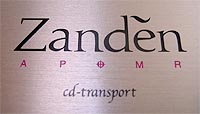 |
||||||||||||||
 |
||||||||||||||
|
Manufacturer's website
|
||||||||||||||
 |
||||||||||||||